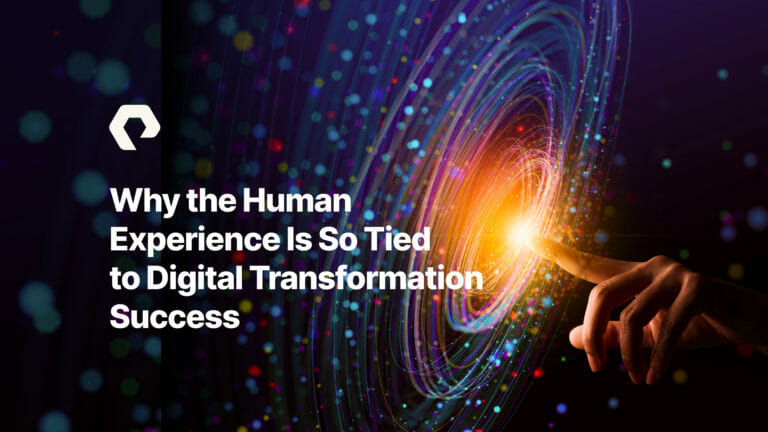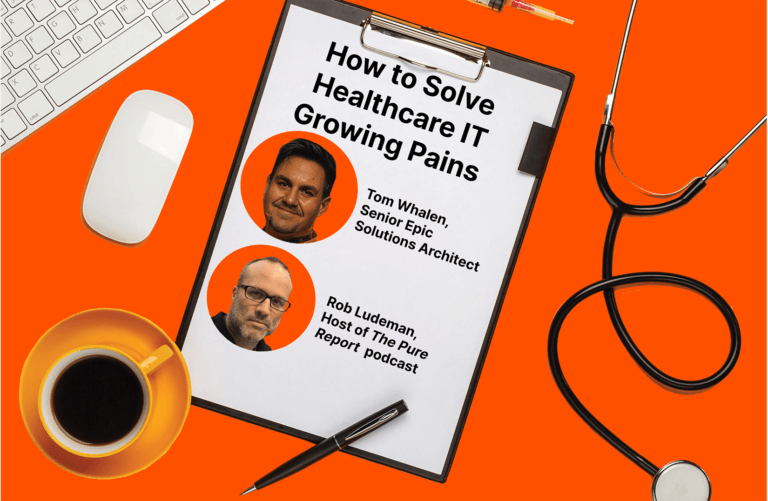Think about an experience we go through as humans that’s generally tedious or unpleasant—for example, buying a car. No matter how slick the showroom or gorgeous the car, the experience tends to be slow, painful, and incomprehensible. We have so much digital technology at our disposal to make these experiences better. Yet, time and again, businesses fail to deploy technology in ways that improve the human experience.
But the innovators who do put humans first are the real disruptors—and these are their transformation success stories.
People Over Products
In the course of digital transformation (DX), a top priority for organizations worldwide, we can get so caught up in the wonder of the digital experience that we forget to consider how it impacts people—both employees and customers. Without the enthusiasm and excitement of people using the technology, transformation is on shaky ground.
As McKinsey noted in its research about digital transformation, the success rate is low. To become a success story requires a deeper understanding of how employees’ jobs will change. Then, you have to properly communicate those changes to them.
It’s change management of the highest order: A mix of human desires and unrealized technology requirements makes it complicated to do digital transformation well. A true DX experience does require a holistic modernization of all core business processes—but it also means visible improvements for employees or customers.
Without the improved human experience, DX can’t achieve the end goals of greater productivity and innovation.
The Expectations for Better Experiences
Let’s get back to the car-buying example, only let’s look at one that works: AutoNation.
When AutoNation began its transformation journey, the human experience—that is, how customers interacted with the car retailer’s online and offline sales and buying processes—became the defining characteristic of the company. AutoNation put all of its digital transformation muscle into the development of accessible, touch-free digital experiences. “Our differentiator as a company is the technology,” says Adam Rasner, Vice President of Technology Operations for AutoNation. “There’s an expectation that when customers interact with us, the experience is better than anywhere else. They want to be able to do 100% of their transactions online without stepping into a dealership.”
Creating the car-buying experience customers crave was in large part an exercise in managing data about sales, appraisals, and auctions, and tying it together, using Pure Storage®. As a result, AutoNation increased online business by 45%. Clearly, the human-centered experience was at the heart of this successful outcome.
Translating DX Visions into IT Capabilities
Organizations that focus on the human aspect of digital transformation will outperform others by a long shot. That’s not just a guess, since research is bearing this out. By 2024, it’s expected that digital-first enterprises will enable empathetic customer experiences by shifting 70% of tech and services spending to as-a-service and outcomes-centric models, according to IDC. And, by 2024, 70% of the Forbes Global 2000 public companies will gain twice as much in return on tech investments that augment employee and customer activities, compared with ones that automate individual processes.
The order of tasks for successful DX is clear: translate visions for better human experiences into IT capabilities, not the other way around. If transformation is about human experiences and workflows, a culture shift is needed, and that culture shift should drive the digital technology shift.
Another key to aligning technology to transformation is to understand how digital optimization fits into the process. As Gartner defines it, digital optimization is focused on the continuous improvement of existing practices and processes. It’s a balancing act between establishing solid long-term digital foundations for the business and the need to fight the day-to-day fires.
4 Elements of Successful Digital Transformation to Consider:
- The incremental innovations, such as weekly or monthly activities that contribute to the big-picture goal.
- The wider industry in which an organization operates since some organizations are forced into transformation if their industry is being disrupted.
- Doing what you’re doing, but doing it in ways that make life better for customers while improving business execution.
- Leveraging technology to create new revenue streams and business models. Keep disrupting and don’t stand still—there’s no transformation in being stationary!
Addressing the cultural shift of change and researching the human impact of transformation will be critical to DX success. Finding ways to put people first is what this next wave of transformation is going to be all about.
![]()







